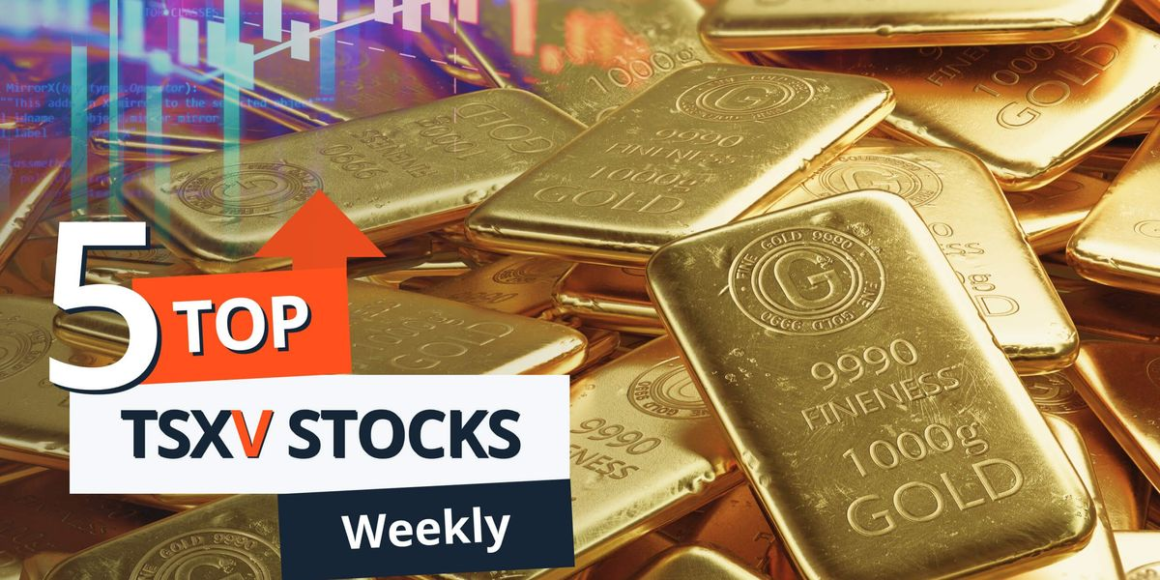Welcome to the Investing News Network’s weekly look at the best-performing junior mining stocks on the TSX Venture Exchange, starting with a round-up of Canadian and US market data impacting the resource sector.
Which TSXV-listed companies rose the most against that backdrop? Here are the five top gainers.
Weekly gain: 50 percent; market cap: C$31.04 million; share price: C$0.195
Westhaven Gold is working to advance four gold projects along the Spences Bridge Gold Belt located near Kamloops, BC. The four projects — Prospect Valley, Shovelnose, Skoonka Creek and Skoonka North — cover 37,000 hectares along the belt, which hosts similar geology to others that contain epithermal-style gold-silver mineralization.
In the assessment, the company reported a base-case after-tax net present value of C$222 million, with an internal rate of return of 32.3 percent and a payback period of 2.6 years following the start of production.
The resource estimate for the project outlines indicated resources of 612,000 ounces of contained gold and 3.27 million ounces of contained silver from 2.98 million metric tons (MT) of ore with average grades of 6.38 grams per MT (g/t) gold and 34.1 g/t silver. The project also hosts inferred resources of 166,000 ounces of gold and 725,000 ounces silver from 1.33 million MT with average grades of 3.89 g/t gold and 16.9 g/t silver.
The company did not release news last week, but has seen gains in its share price alongside the price of gold.
Weekly gain: 46.67 percent; market cap: C$99.24 million; share price: C$0.66
Lithium Ionic is an exploration and development company that is acquiring and moving forward at lithium properties in Brazil. It has arranged its assets into two main groups: the Itinga and Salinas properties.
The feasibility study also points to a 14 year mine life for Bandeira, during which an underground mining operation will put out an average of 178,000 MT of spodumene concentrate grading 5.5 percent Li2O.
Lithium Ionic has not released news in August.
Weekly gain: 45 percent; market cap: C$12.65 million; share price: C$0.145
Adjacent to Manhattan is Scorpio’s Goldwedge project, a 1,795 acre site that includes a fully permitted underground mine and a 400 MT per day mill facility and gravity circuit.
The program is being performed to support a resource estimate with a metallurgical study later in the year.
Weekly gain: 42.86 percent; market cap: C$29.63 million; share price: C$0.45
Arras Minerals is a copper and gold exploration company working to develop assets in Northeast Kazakhstan.
Its flagship property is the Beskauga project, which is situated within the Central Asian Orogenic belt, 300 kilometers from the capital city of Astana. The property consists of three mineral licenses covering an area of over 900 square kilometers, with deposits originally identified in the 1980s during Soviet-era drill programs.
The company has not released news in the past week.
Weekly gain: 42.86 percent; market cap: C$77.04 million; share price: C$0.30
Falco Resources is an exploration and development company operating within the Abitibi Greenstone Belt in Québec, Canada. Its flagship asset is the Horne 5 polymetallic gold project, which consists of 67,000 hectares of land in the Noranda mining camp, and includes 13 historic gold and base metals mining sites, including the Horne mine.
The TSX, or Toronto Stock Exchange, is used by senior companies with larger market caps, while the TSXV, or TSX Venture Exchange, is used by smaller-cap companies. Companies listed on the TSXV can graduate to the senior exchange.
The exchange lists a handful of other fees and expenses companies can expect, including but not limited to security commission and transfer agency fees, investor relations costs and director and officer liability insurance.
These are all just for the initial listing, of course. There are ongoing expenses once companies are trading, such as sustaining fees and additional listing fees, plus the costs associated with filing regular reports.
Investors can trade on the TSXV the way they would trade stocks on any exchange. This means they can use a stock broker or an individual investment account to buy and sell shares of TSXV-listed companies during the exchange’s trading hours.
Article by Dean Belder; FAQs by Lauren Kelly.
Securities Disclosure: I, Dean Belder, hold no direct investment interest in any company mentioned in this article.
Securities Disclosure: I, Lauren Kelly, hold no direct investment interest in any company mentioned in this article.


Leave a Reply